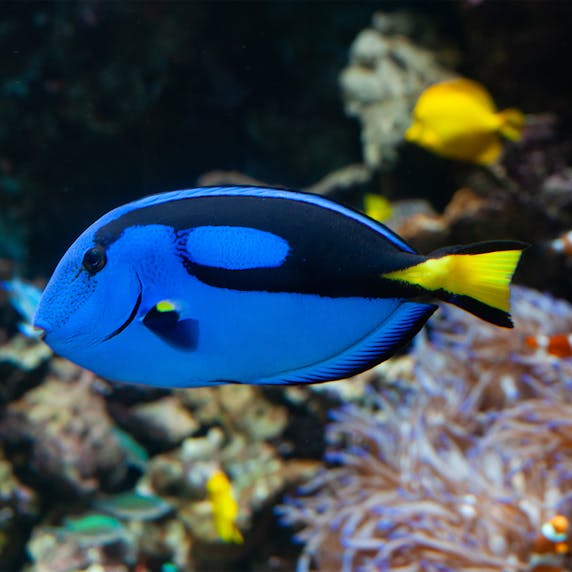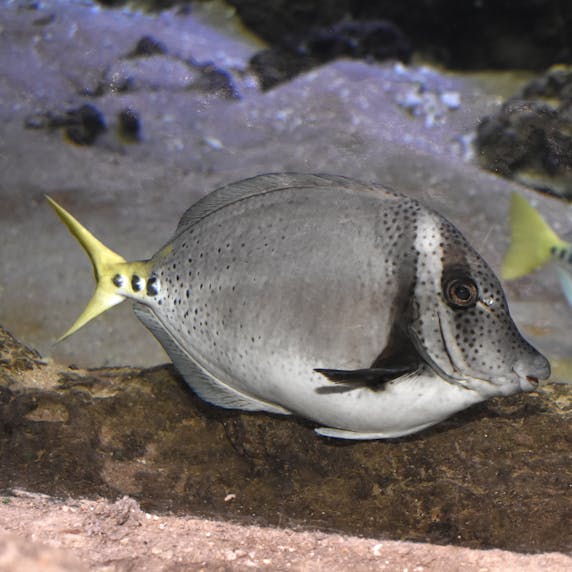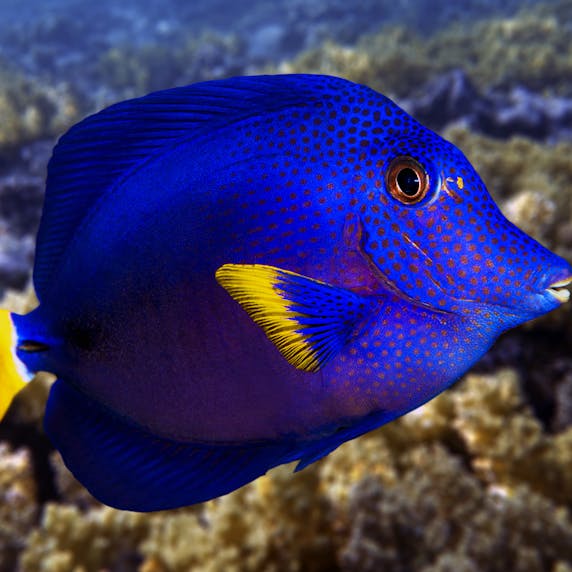
Surgeonfishes are a diverse group that give colour to coral reefs worldwide. Yet we still know relatively little about the reproduction of this family. This makes it difficult to breed these animals in aquariums. The researchers at RoffaReefs, a startup from Rotterdam Zoo, are therefore researching the development of young surgeonfishes and other reef fish. In this way, they hope to make an important contribution to the population of surgeonfish both in aquaria and in the wild.
Acanthuridae

Up to 30 years, depending on the species
7 – 50 centimeters
15 – 100 centimeters
100 – 2500 grams
The surgeonfish family has a wide variety of colours and shapes. But they all have a couple of bony protrusions on the sides of the tail, just in front of the tail fin. These protrusions are shaped like a scalpel; hence the name 'surgeonfish'. Some species also have a notable hump or 'horn' on their forehead. The hump's function is not entirely clear yet.
...The palette surgeonfish plays a leading role in the famous animated film Finding Dory?
Surgeonfishes are found in all tropical coastal waters around the world, from the Caribbean to the African coast and the Great Barrier Reef in Australia. They primarily live among coral reefs, where their bright colours don't stand out too much. Many species reproduce in mangrove forests or seagrass fields.

Surgeonfishes are true grazers. Most species have spatula-shaped teeth with a sharp, serrated edge. With these, they scrape the algae off the coral reef. This prevents the algae from overgrowing the reef. That's important because tropical corals need sunlight to survive. Algae eaters, like surgeonfishes, are actually the 'gardeners' of the coral reef: they take care of the reef and ensure that the corals continue to grow well.

Fish in aquariums often receive fish food containing fishmeal. Fishmeal consists of parts of fish that are not used for human consumption. For algae eaters, such as surgeonfishes, this does not match their natural diet. Additionally, algae do not float around in the water like most fish food but grow on coral reefs. To offer the fish in aquariums a more natural food source, RoffaReefs developed a feeding rack with vegan fish food. Now, the surgeonfishes can truly graze in the 3D-printed feeding racks!

To better understand how surgeonfishes reproduce, researchers at RoffaReefs are developing a breeding system for fish. In this floating system, fish eggs hatch safely, and larvae grow up, allowing researchers to study the fish's growth. They are testing this system in the coral reefs around Bonaire. They aim to determine when the fish reproduce and how the eggs develop into young fish. In doing so, they hope to maintain a healthy wild population of reef fish, such as surgeonfishes. Indirectly, they are also keeping the coral reef healthy!

In Blijdorp, various types of surgeonfish can be seen: the palette surgeonfish, the yellowtail tang, the razor surgeonfish, and the short-nosed unicornfish. Their natural habitat has been replicated in their aquariums, mimicking both coral reefs and mangrove forests. Nowadays, the caretakers feed the surgeonfishes with algae, which they offer on 3D-printed feeding racks.



